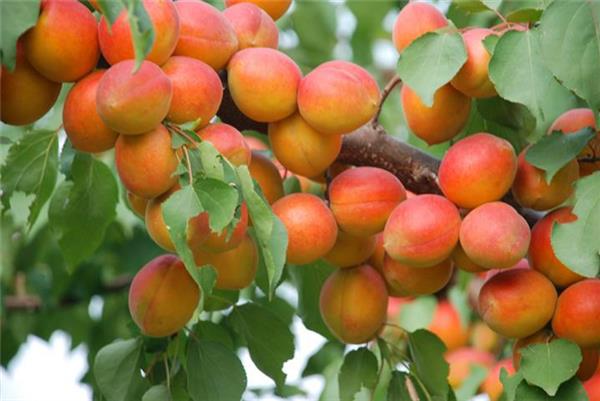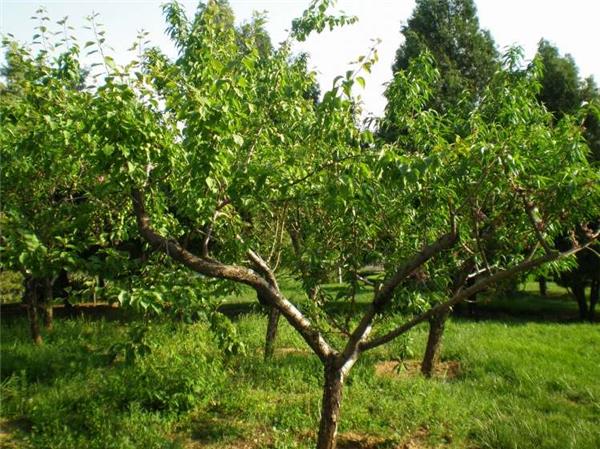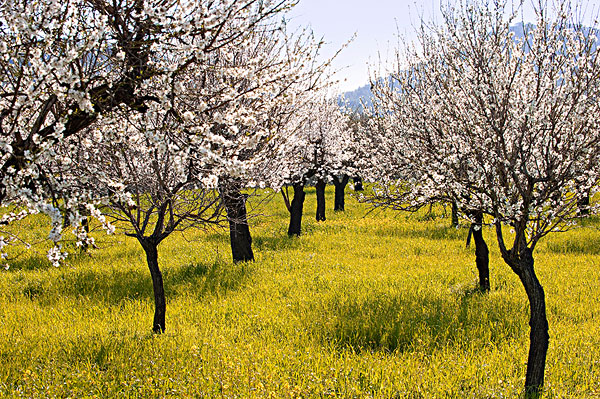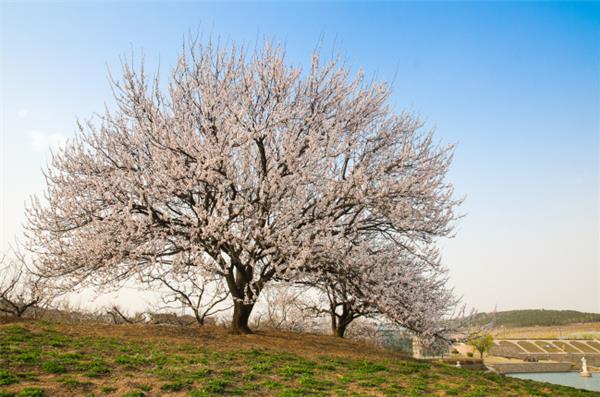Pruning principles and methods of apricot trees in different periods
The role of apricot is mainly reflected in the edible value of its fruit, but apricot is also a common flower and fruit landscape tree species, so its pruning is particularly important.

1. Pruning techniques of apricot trees in young stage
1. Young trees are highly dry in shaping and pruning apricot trees, so it is appropriate to adopt the natural happy shape of multi-main branches. The stem is 40-50 cm high, and there are three adjacent main branches at the base, which are no longer graded after forming 4-6 secondary main branches according to binary branches. Two fixed lateral branches were cultured on each main branch. When the basic tree shape is completed, the distance between the backbone branches is about 100 cm. This tree-shaped lateral branch has long life, strong branch group, fast forming and high utilization rate of space.
two。 The elongated branch of the main side branch should be cut short every year during plastic surgery, and the amount of cutting should be determined according to the variety, the strength of the branch, the length of the branch and the growth potential. In general, the strong branches should be cut lightly and the weak branches should be cut heavily, and it is appropriate to cut off the original branches. Overdense branches and overgrown branches should be removed as soon as possible. But it should be noted that young trees should avoid overpruning and leave more twigs in order to speed up their formation and bear fruit earlier.

2. Pruning techniques of apricot trees in full fruiting period
1. Under the condition of good fertilizer and water and prosperous tree growth, the short cut should not be overweight during pruning, otherwise it will stimulate the sprouting and flourishing branches near the cutting mouth, inhibit the germination of the lower buds, and even cause the basal branchlets to die prematurely. Pruning of elongated and developmental branches. It can be flexibly mastered according to the principle of less cutting of strong branches and more cutting of weak branches. Generally speaking, it is appropriate to cut off the new shoots of the same year, which is about 4 or so. After the vegetative branches and extended branches are properly cut off, the top can produce robust new shoots and the lower part can produce fruit branches. If the short cut is too light, although more fruit branches can be formed, the new shoots at the top will grow weakly, which can easily make the vegetative growth and reproductive growth lose balance, weaken the tree growth and shorten the full fruit life.
two。 The fruiting branch group on the back of the main branch or side branch has a longer effective fruiting life, but if it is allowed to grow naturally, it is easy to form a tree on the tree, disturb the tree shape, and compete with the backbone branch, such as pruning and changing its extension direction, that is, from upright to oblique, it can slow down the growth, do not compete with the backbone branch, and can be used for fruit for a long time.
3. The overgrown branches that germinate inside the crown, grow exuberantly and are planted in a suitable position can be picked out and used slowly in time. When pruning all levels of main and lateral branches, choose to leave full buds to continue to extend outward and expand the crown.

3. Pruning techniques of apricot trees in winter
1. Retraction is also known as shearing. The perennial branch is about to be truncated to the base of the one-year-old branch or the part of the perennial branch. The effect of shearing can weaken and control the growth of mother branches in inappropriate parts, promote the growth of branches in the later stage or stimulate the germination of latent buds, and change the extension direction and angle of all kinds of extended branches.
two。 Sparse pruning, that is, cutting branches from the base. The main objectives of thinning are: competitive branches on the back, over-dense branches, cross branches in the middle and upper parts of the crown, whorled branches and adjacent branches near the shearing mouth; at the same time, it can also restrain the front and back, and improve the ventilation and light transmission conditions in the crown.
3. Slow release is the same as other fruit tree pruning, relaxation is not pruning. The slow release method is mostly used for young trees and prosperous branches, in order to slow down the vegetative growth potential of these branches, form more short fruit branches in the middle and upper part of the branches, increase the fruiting part and increase the yield.

Generally speaking, apricot trees in the young stage are mainly cut short and should not be overpruned, while the full fruit period and winter should measure the degree of pruning according to the growth of the apricot tree itself. in fact, it is not difficult to be more careful.
Related
- Wuhan Hospital Iron Tree Blooming Result Was Instantly Frightened by the Gardener Master
- Which variety of camellia is the most fragrant and best? Which one do you like best?
- What is the small blue coat, the breeding methods and matters needing attention of the succulent plant
- Dormancy time and maintenance management of succulent plants during dormancy
- Minas succulent how to raise, Minas succulent plant pictures
- What are the varieties of winter succulent plants
- How to raise succulent plants in twelve rolls? let's take a look at some experience of breeding twelve rolls.
- Attention should be paid to water control for succulent plants during dormant period (winter and summer)
- Watering experience of twelve rolls of succulent plants
- Techniques for fertilizing succulent plants. An article will let you know how to fertilize succulent plants.



